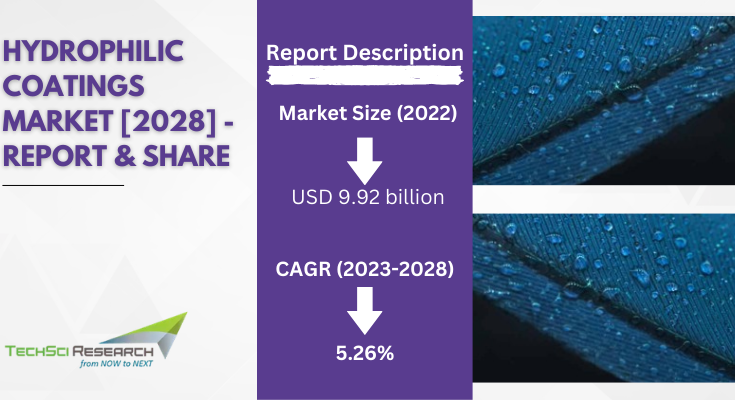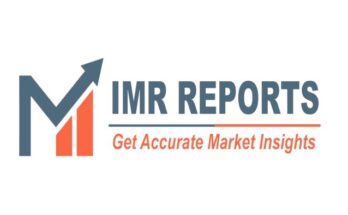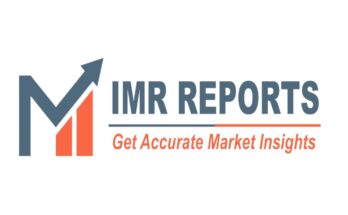According to TechSci Research report, “Hydrophilic Coatings Market – Global Industry Size, Share, Trends, Competition Forecast & Opportunities, 2028”, the Global Hydrophilic Coatings Market stood at USD 9.92 billion in 2022 and is anticipated to grow with a CAGR of 5.26% in the forecast period, 2024-2028. Hydrophilic coatings have emerged as a transformative technology, making waves across various industries due to their unique properties and applications. From healthcare to consumer goods, the global hydrophilic coatings market is experiencing robust growth, driven by technological advancements, increasing healthcare needs, and a focus on sustainability.
The global emphasis on sustainability is impacting the coatings industry, and hydrophilic coatings are no exception. Companies are actively exploring eco-friendly formulations and manufacturing processes to align with environmental goals. The ability of hydrophilic coatings to address sustainability concerns positions them favorably in a market that increasingly values green and responsible practices.
The global hydrophilic coatings market is riding a wave of innovation and demand across diverse industries. As technological advancements continue, and industries prioritize sustainable solutions, the market is poised for sustained growth. The expansion of companies like Harland Medical Systems, Inc. and Biocoat, Inc. into advanced testing systems and dip coating equipment signals a future where hydrophilic coatings play an increasingly vital role in shaping the products we use and the way we approach healthcare.
Browse over XX market data Figures spread through XX Pages and an in-depth TOC on the “Global Hydrophilic Coatings Market” @ https://www.techsciresearch.com/report/hydrophilic-coatings-market/19852.html
Global Hydrophilic Coatings Market is segmented into substrate, application, regional distribution, and company
Polymers stand as a cornerstone in the hydrophilic coatings market, offering a versatile canvas for these coatings. Whether applied to medical devices, consumer goods, or textiles, hydrophilic coatings on polymer substrates enhance lubricity and reduce friction, making products more user-friendly. The flexibility of polymers allows for widespread application, especially in industries where lightweight, durable materials are paramount
In applications requiring transparency and optical clarity, glass emerges as a substrate of choice for hydrophilic coatings. The hydrophilic nature of these coatings ensures water spreads evenly, preventing water droplets from distorting vision. Glass surfaces, when coated with hydrophilic formulations, find applications in eyeglasses, camera lenses, and optical devices, contributing to enhanced clarity and performance.
Hydrophilic coatings on metal substrates serve a dual purpose, offering not only water-attracting properties but also corrosion resistance. In industries such as automotive and aerospace, where metal components are exposed to harsh environments, hydrophilic coatings mitigate the effects of corrosion, extending the lifespan of critical parts. Nanoparticles, operating on a molecular scale, have revolutionized the hydrophilic coatings market. The integration of nanotechnology allows for coatings with enhanced properties, including superior water repellency and anti-fouling capabilities.
Nanoparticle-based hydrophilic coatings find applications in cutting-edge industries where precision and performance are paramount. Beyond the major substrates, hydrophilic coatings have found applications on various materials, including ceramics, textiles, and composites. Each substrate presents unique challenges and opportunities, and hydrophilic coatings are adapted to address specific requirements in diverse industries. In the aerospace industry, where precision and performance are paramount, hydrophilic coatings play a vital role.
These coatings find applications on aircraft surfaces, particularly on windows and sensors. By preventing water droplets from distorting vision and ensuring optimal sensor functionality, hydrophilic coatings contribute to safety and efficiency in aerospace operations.
The automotive sector harnesses the benefits of hydrophilic coatings for improved safety and functionality. From windshields that repel water for enhanced visibility to side mirrors that resist fogging, hydrophilic coatings enhance the overall driving experience.
Moreover, in automotive sensors and cameras, these coatings play a crucial role in maintaining accuracy under various weather conditions. On the high seas, where exposure to water and harsh conditions is inevitable, hydrophilic coatings demonstrate their resilience. Applied to marine surfaces such as ship hulls, these coatings reduce friction, improve fuel efficiency, and mitigate the impact of fouling organisms. The marine industry leverages hydrophilic coatings to enhance the durability and performance of vessels, contributing to sustainability and operational efficiency.
In the realm of healthcare, hydrophilic coatings have become integral to medical devices. Catheters, guidewires, and surgical instruments benefit from the lubricity provided by hydrophilic coatings, enabling smoother procedures and reducing patient discomfort. The application of these coatings in the medical field aligns with the industry’s focus on minimizing invasiveness and improving patient outcomes.
Hydrophilic coatings extend their reach to various other applications, including optics, consumer goods, and electronics. Eyeglasses, camera lenses, and electronic devices benefit from these coatings, which provide water resistance and durability. The adaptability of hydrophilic coatings to diverse materials and substrates makes them a go-to solution for addressing specific needs across industries.
The healthcare sector in Asia-Pacific is witnessing substantial growth, driven by an aging population, rising healthcare awareness, and increasing healthcare spending. Hydrophilic coatings play a crucial role in medical devices, and the escalating demand for minimally invasive procedures further fuels the adoption of hydrophilic-coated devices. As Asia-Pacific invests in advanced healthcare technologies, the hydrophilic coatings market reaps the benefits.
Asia-Pacific has solidified its position as a global manufacturing hub for electronics and automotive industries. Hydrophilic coatings, with their diverse applications in these sectors, experience heightened demand. From hydrophilic-coated sensors in automobiles to water-resistant coatings for electronic devices, the region’s thriving manufacturing ecosystem boosts the global hydrophilic coatings market.
Major companies operating in the Global Hydrophilic Coatings Market are:
- Abbott Laboratories Inc.
- Harland Medical Systems Inc.
- Surmodics Incorporated
- Aculon, Inc.
- Ast Products, Inc.
- Biocoat, Inc.
- Corning Inc.
- Royal DSM
- Hydromer Inc
To Download FREE Sample Pages of this Report📥 @ https://www.techsciresearch.com/sample-report.aspx?cid=19852
Customers can also request for 10% free customization on this report
“The infusion of smart technologies into hydrophilic coatings marks a transformative era. IoT integration allows for real-time monitoring, data collection, and adaptive functionalities. Smart coatings, equipped with sensors and connectivity, are finding applications in various industries, from healthcare devices that monitor patient health to automotive surfaces that adapt to changing environmental conditions. From the integration of nanotechnology and a heightened focus on sustainability to the advent of smart coatings and expanded applications, the industry is undergoing a transformative phase. As innovation continues to drive progress, the hydrophilic coatings market is poised to shape the future of diverse industries by enhancing performance, sustainability, and adaptability in an ever-changing world.,” said Mr. Karan Chechi, Research Director with TechSci Research, a research-based management consulting firm.
“Hydrophilic Coatings Market – Global Industry Size, Share, Trends, Opportunity, & Forecast 2018-2028 Segmented By Substrate (Polymers, Glass, Metal, Nanoparticles, Others), By Application (Aerospace, Automotive, Marine, Medical Devices, Others), By Region, Competition”, has evaluated the future growth potential of Global Hydrophilic Coatings Market and provides statistics & information on market size, structure and future market growth. The report intends to provide cutting-edge market intelligence and help decision-makers take sound investment decisions. Besides, the report also identifies and analyzes the emerging trends along with essential drivers, challenges, and opportunities in Global Hydrophilic Coatings Market.
You may also read:
Resorbable (Bioresorbable) Polymers Market | [2028] Exploring Growth, Potential, and Future, Trends
Expandable Graphite Market [2028] – Report & Share
Aerographite Market Outlook & Forecast [2028]
Table of Content-Hydrophilic Coatings Market
- Product Overview
1.1. Market Definition
1.2. Scope of the Market
1.2.1. Markets Covered
1.2.2. Years Considered for Study
1.2.3. Key Market Segmentations
- Research Methodology
2.1. Objective of the Study
2.2. Baseline Methodology
2.3. Key Industry Partners
2.4. Major Association and Secondary Applications
2.5. Forecasting Methodology
2.6. Data Triangulation & Validation
2.7. Assumptions and Limitations
- Executive Summary
3.1. Overview of the Market
3.2. Overview of Key Market Segmentations
3.3. Overview of Key Market Players
3.4. Overview of Key Regions/Countries
3.5. Overview of Market Drivers, Challenges, Trends
- Impact of COVID-19 on Global Hydrophilic Coatings Market
- Global Hydrophilic Coatings Market Outlook
5.1. Market Size & Forecast
5.1.1. By Value & Volume
5.2. Market Share & Forecast
5.2.1. By Substrate (Polymers, Glass, Metal, Nanoparticles, Others)
5.2.2. By Application (Aerospace, Automotive, Marine, Medical Devices, Others)
5.2.3. By Region
5.2.4. By Company (2022)
5.3. Market Map
- Asia Pacific Hydrophilic Coatings Market Outlook
6.1. Market Size & Forecast
6.1.1. By Value & Volume
6.2. Market Share & Forecast
6.2.1. By Substrate
6.2.2. By Application
6.2.3. By Country
6.3. Asia Pacific: Country Analysis
6.3.1. China Hydrophilic Coatings Market Outlook
6.3.1.1. Market Size & Forecast
6.3.1.1.1. By Value & Volume
6.3.1.2. Market Share & Forecast
6.3.1.2.1. By Substrate
6.3.1.2.2. By Application
6.3.2. India Hydrophilic Coatings Market Outlook
6.3.2.1. Market Size & Forecast
6.3.2.1.1. By Value & Volume
6.3.2.2. Market Share & Forecast
6.3.2.2.1. By Substrate
6.3.2.2.2. By Application
6.3.3. Australia Hydrophilic Coatings Market Outlook
6.3.3.1. Market Size & Forecast
6.3.3.1.1. By Value & Volume
6.3.3.2. Market Share & Forecast
6.3.3.2.1. By Substrate
6.3.3.2.2. By Application
6.3.4. Japan Hydrophilic Coatings Market Outlook
6.3.4.1. Market Size & Forecast
6.3.4.1.1. By Value & Volume
6.3.4.2. Market Share & Forecast
6.3.4.2.1. By Substrate
6.3.4.2.2. By Application
6.3.5. South Korea Hydrophilic Coatings Market Outlook
6.3.5.1. Market Size & Forecast
6.3.5.1.1. By Value & Volume
6.3.5.2. Market Share & Forecast
6.3.5.2.1. By Substrate
6.3.5.2.2. By Application



